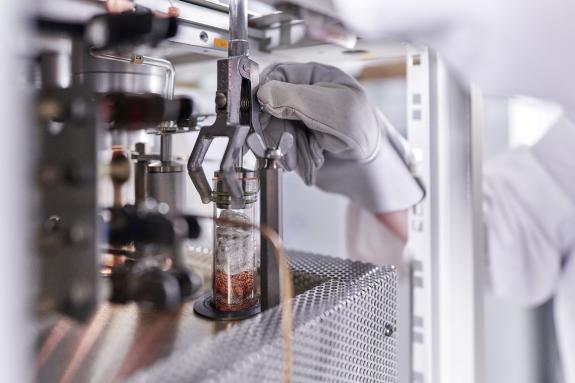Time
18:00 - 24:00 o'clock
Organizer
Max-Planck-Institut für Biogeochemie
Place
Foyer, 1. Etage
Adresse
Hans-Knöll-Str. 10
For our research on biogeochemical cycles, we need analytical data on the proportions of carbon, nitrogen, hydrogen, sulphur, phosphorus and other elements in soil, soil water or plant growth.
In the RoMA Laboratory for Routine Chemical Measurements & Analyses, for example, the carbon and nitrogen content is determined in a variety of different samples. We are able to determine these elements in soils, sediments, plant litter, plants and rock fragments, as well as in carbonates, charcoal and in other solid materials.
What equipment will be used, how accurate can and must the results be, and what information will we get from them? Stop by and be surprised!
Bild

Replacement of a reduction tube in the elemental analyser
, ©
Anna Schroll / MPI-BGC
Location
